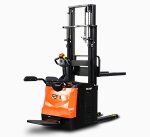Scanned by: Tim Delaney, 1997; Mutual dependence of capitals in the velocity of their circulation, The four moments in the turnover of capital, Moment II to be considered here: transformation of the product into money; duration of this operation, Concentration of many workers; productive force of this concentration, General as distinct from particular conditions of production, Transport to market (spatial condition of circulation) belongs in the production process, Credit, the temporal moment of circulation, Influence of circulation on the determination of value; circulation time = time of devaluation, Difference between the capitalist mode of production and all earlier ones (universality, propagandistic nature), Continuity of production presupposes suspension of circulation time, Ramsay’s view that capital is its own source of profit, No surplus value according to Ricardo’s law, Ricardo’s theory of value. production. D’eau de la Malle, Productive consumption. Soviet Marxologists released several never-before-seen Marx/Engels works in the 1930s. The book demonstrates the relevance of the Grundrisse to an understanding of Capital and of Marx’s theoretical project as a whole, which, as is well known, remained uncompleted. M. Nicolaus, Penguin Books, 1973. Publication on other online sites is prohibited. Capital and simple exchange. Conditions of capitalist production in colonies, Surplus value and profit. 13, p. 7. Population and overpopulation, Necessary labour. (Tuckett), Profit. Grundrisse (inklusive inledningen) upptar sidorna 19–768 i 42:a bandet av Marx-Engels-Werke (MEW). John Stuart Mill, Turnover of capital. It is an extremely rich and thought-provoking work, showing signs of humanism and the influence of Hegelian dialectic method. Interest. Two nations may exchange according to the law of profit in such a way that both gain, but one is always defrauded, (I) VALUE (This section to be brought forward). Sismondi, Transformation of surplus value into profit, Surplus value = relation of surplus labour to necessary labour, Value of fixed capital and its productive power, Machinery and surplus labour. Transformations of capital. Rosdolsky states that only three or four copies of the 1939-41 edition ever reached ‘the western world’. Analysing chapter one section four of Capital Vol.I , Ehrbar (2010) points out that Marx draws a Relation of the worker to the conditions of labour in capitalist production. Source: Grundrisse, Penguin Books in association with New Left Review, 1973; 519-521. Is money fixed capital or circulating capital? The Grundrisse der Kritik der Politischen Ökonomie (Fundamentals of a Critique of Political Economy) is a lengthy, unfinished manuscript by the German philosopher Karl Marx.The series of seven notebooks was rough-drafted by Marx, chiefly for purposes of self-clarification, during the winter of 1857–8. Production process, Capital’s change of form and of substance; different forms of capital; circulating capital as general character of capital, Fixed (tied down) capital and circulating capital, Surplus value. It is an extremely rich and thought-provoking work, showing signs of humanism and the influence of Hegelian dialectic method. G Karl Marx, Grundrisse: Foundations of the Critique of Political Economy (Rough Draft), trans. (Population), (Population can increase in proportion as necessary labour time becomes smaller), Transition from the process of the production of capital into the process of circulation, SECTION TWO: THE CIRCULATION PROCESS OF CAPITAL, Devaluation of capital itself owing to increase of productive forces, Capital as unity and contradiction of the production process and the realization process, Capital as limit to production. N Karl Marx, Grundrisse: Foundations of the Critique of Political Economy (Rough Draft), trans. But it is not until the Grundrisse (1857) that Marx embeds their use into his analysis of the commodity or his critique of political economy. 40 vols. The second added fragments from Marx’s 1851 notebooks of excerpts from Ricardo, the fragment ‘Bastiat and Carey’ (also included in this translation), and miscellaneous related material; also extensive annotations and sources. It may take up to 1-5 minutes before you receive it. Recapitulation of the doctrine of surplus value generally, Relation between the objective conditions of production. 3–223). Bread. Marx is not only unknown, he is undead. xii FOREWORD Terrell Carver Professor of Political Theory, University of Bristol. Marx, Karl 1994 [1963–7], Economic Manucripts (1863–7), in MECW , Volume 34, New York: International Publishers. The first volume contained the introduction and the seven notebooks translated here. MEW, Marx, supplementary vol. 7 See also Grundrisse:Foundations ofthe CritiqueofPoliticalEconomy(Rough Draft), trans. pdf. The correspondence with Ruge was published in the same Jahrbücher (MEW, Vol. He explicitly postulates that labor is the source of wealth Marx wrote the Grundrisse in the time from October 1857 until May 1858 (MEW 42, V). Circulation time. Manuscripts – but the Grundrisse stood alone as issuing forth from the most intense period of Marx’s decade-long, in-depth study of economics. Als Grundrisse der Kritik der politischen Ökonomie im weiteren Sinne, kurz Grundrisse, wird ein Manuskript bezeichnet, welches Karl Marx 18571858 in London verfasst hat. What is capital? 29, p. 312. Newman. The productivity of the different capitals (branches of industry) determines that of the individual capital, Circulation period. Carey’s erroneous calculation, The capitalist, who does not pay the worker for the preservation of the old value, then demands remuneration for giving the worker permission to preserve the old capital, Difference between consumption of the instrument and of wages. The more researchers and scholars stalk him with the wooden stake, the more protean will be his spectres. Marx's text is a combination of condensed quotation and paraphrase of the material in Hegel's paragraphs 83–111 of the Encyclopedia. If possible, download the file in its original format. Martin Nicolaus (New York, 1974), p. 424 (German text in ... Marx and Bourgeois Ideology . 38. MEW, Marx and Engels, vol. Vorbemerkung Es ist ein großes Anliegen des Verlages Olga Benario und Herbert Baum, die bisher nur gedruckt vorliegenden Werke von Marx und Engels („MEW“) nun digitalisiert als PDF-Dateien vorlegen zu können. (Tuckett), Blake on accumulation and rate of profit; dormant capital, Domestic agriculture at the beginning of the sixteenth century. 337–346), which Arnold Ruge and Marx edited jointly. MEW, Marx and Engels, vol. Surplus capital, Immovable capital. Grundrisse Karl Marx, Grundrisse: Foundations of the Critique of Political Economy (Rough Draft), translated by Martin Nicolaus ([79:5–:9] 7854) KML 7 Karl Marx Library, volume 7, edited and translated by Saul K. Padover (7857–55) MECW 76 Karl Marx and … The fragment is Marx's précis of Hegel's doctrine on “Being” in the “Minor Logic”, the First Part of the Encyclopedia of the Philosophical Sciences. Increase of simultaneous working days. For the German text of Marx's works prior to The Communist Manifesto, the MEGA is used; for all other works, except the Grundrisse, the MEW is used.Whenever possible, citations in English refer to the CW currently being published. Despite these differences Marx in the ... 7-8. Return of capital. References to The German Ideology will be given in parentheses in the text: page number of the German text in MEW, Vol. (, Slavery and wage labour; profit upon alienation (Steuart), The wool industry in England since Elizabeth; silk-manufacture; iron; cotton, Origin of free wage labour. Self-multiplication of value is its only movement, Capital, as regards substance, objectified labour. Exchange value and use value for exchange value, Money and its use value (labour) in this relation capital. Opdyke, Theory of foreign trade. of , With contributions from such scholars as Eric Hobsbawm and Terrell Carver, and covering subject areas such as political economy, philosophy and Marxism, this book is likely to become required reading for serious scholars of Marx across the world. Surplus, Necessity of the worker’s propertylessness, Commerce with equivalents impossible. The . Rossi. Berlin, 1958-1968. Experiencing Marx is an activity in the present, and in the present there will be an increasing number of Marxes to be experienced. In this collection, various international experts in the field, analysing the Grundrisse on the 150th anniversary of its composition, present a Marx in many ways radically different from the one who figures in the dominant currents of twentieth-century Marxism. * multi-volume collections and volumes are indicated thus: MEC 1, MEW 33, etc. Production time. 199-200). Prices of commodities and quantity of circulating money. David McLellan, New York: Harper and Row, 1971. 2 MEW , vol. 508 and MEW, XXIII, 11-12. This translation is licensed by the copyright owner, Martin Nicolaus, exclusively to MIA. epub These manuscripts include the famous Grundrisse (1857-58) and the published parts I and II of A Contribution to the Critique of Political Economy, followed by the six-part manuscript of part III, which the MEGA divides into different volumes according to Marx’s original schema (1861-63), followed by the three volumes of manuscripts from 1863-67. Marx-Engels-Werke (MEW) är en samling skrifter av Karl Marx och Friedrich Engels som gavs ut av Institutet för marxismen-leninismen vid Tysklands socialistiska enhetspartis centralkommitté i DDR mellan åren 1956 och 1990. . Most were early works – like the Economic and Philosophical Manuscripts – but the Grundrisse stood alone as issuing forth from the most intense period of Marx’s decade-long, in-depth study of economics. Written between 1857 and 1858, the Grundrisse is the first draft of Marx’s critique of political economy and, thus, also the initial preparatory work on Capital. Marx e… But in this process labour is already incorporated in capital, The capitalist obtains surplus labour free of charge together with the maintenance of the value of material and instrument, Through the appropriation of present labour, capital already possesses a claim to the appropriation of future labour, Confusion of profit and surplus value. tal (véase capítulo 11). Change in the proportion of the component parts of capital, Money and fixed capital: presupposes a certain amount of wealth. Notes by: Ben Fowkes; Do note, though, Marx did not intend it for publication as is, so it can be stylistically very rough in places. Die Marx-Engels-Gesamtausgabe (MEGA) is the largest collection of the writing of Karl Marx and Friedrich Engels in any language.It is an ongoing project intended to produce a critical edition of the complete works of Marx and Engels that reproduces the extant writings of both authors in books of high-quality paper and library binding.. Karl Marx's Grundrisse: Foundations of the critique of political economy 150 years later Marcello Musto. The two different processes in the exchange of capital with labour, Exchange between capital and labour. Marx also says that Hegel was correct to Value of money, Capital, not labour, determines the value of money. A photo-offset reprint of the two volumes bound in one, minus illustrations and facsimiles, was issued by Dietz Verlag, Berlin (E.), in 1953, and is the basis of the present translation. 3, Die deutsche Ideologie, p. 50. Marx, Karl 1993 [1857–8], Grundrisse: Foundations of the Critique of Political Economy, London: Penguin. There are no critical comments by Marx on the doctrine he summarizes. Interruption of the production process. 37. Aim of capitalist production value (money), not commodity, use value etc. . Left aside by Marx in 1858, it remained unpublished until 1939. 3, then (after a diagonal) page number of the English translation (by C. Dutt, W. Lough, and C.P. Unequal periods of production, The concept of the free labourer contains the pauper. Value and capital. He lies very unquietly in the grave. The preliminary chapters of ‘Capital’ eventually appeared as A Contribution to the Critique of Political Economy (1859). En segundo lugar, es tratada ahora (capítulo 13) como el segundo momento constitutivo del proceso del capital, puesto después del proceso de producción (esencia concreta). Wages and profit, Wakefield. Study Guide | = Harmondsworth ... MEW = Marx-Engels Werke. It engages the production of subsequent years, Revenue of fixed capital and circulating capital, The smaller the value of fixed capital in relation to its product, the more useful, Movable and immovable, fixed and circulating, Connection of circulation and reproduction, Rate of profit. Circulation process. Written during the winter of 1857-8, the "Grundrisse" was considered by Marx to be the first scientific elaboration of communist theory. Magill) in Volume 5 of the Collected Works of Marx and Engels (Moscow, Progress; NY, International, 1976). (Torrens), Cotton machinery and working men in 1826. You can write a book review and share your experiences. INTRODUCTION: MARXISM AND THE SENSE OF SUBJECTIVITY Total duration of the production process. Relation when these increase, Result: in proportion as necessary labour is already diminished, the realization of capital becomes more difficult, Concerning increases in the value of capital, Labour does not reproduce the value of material and instrument, but rather preserves it by relating to them in the labour process as to their objective conditions, It is not the quantity of living labour, but rather its quality as labour which preserves the labour time already contained in the material, The change of form and substance in the direct production process, It is inherent in the simple production process that the previous stage of production is preserved through the subsequent one, Preservation of the old use value by new labour, The quantity of objectified labour is preserved because contact with living labour preserves its quality as use value for new labour, In the real production process, the separation of labour from its objective moments of existence is suspended. Written: 1857–61; Vagabondage. (Transformation of surplus labour into capital), The capitalist merely sells at his own cost of production, then it is a transfer to another capitalist. Surplus labour. Capital, collective force. See, for instance, Marx's criticisms of J. S. Mill in Grundrisse, 86-8e, 831-3e, and Capital (New York, 1967) 1:516-18. It also highlights the continuing explanatory power of Marxian categories for contemporary society and its present contradictions. The process of exchange between capital and labour capacity generally, Threefold character, or mode, of circulation, Influence of fixed capital on the total turnover time of capital, Transposition of powers of labour into powers of capital both in fixed and in circulating capital, To what extent fixed capital (machine) creates value, Fixed capital & continuity of the production process. Converted file can differ from the original. Piecework wages, Share of the wage labourer in general wealth determined only quantitatively, Money is the worker’s equivalent; he thus confronts capital as an equal, But the aim of his exchange is satisfaction of his need. Example for machinery and surplus labour, Examples from Glasgow for the rate of profit, Alienation of the conditions of labour with the development of capital. Relation of surplus labour to necessary labour. Interest-bearing capital, (Parentheses on: original accumulation of capital, historic presuppositions of capital, production in general), Conditions for the self-realization of capital, Capital is productive as creator of surplus labour, But this is only a historical and transitory phenomenon, Theories of surplus value (Ricardo; the Physiocrats; Adam Smith; Ricardo again), Surplus value and productive force. Grundrisse in eBook formats: The MEW – the most widely used edition of the works of Marx and Engels, as well as the source for translations into most other languages – was thus deprived of the Grundrisse until its eventual publication as a supplement in 1983. Most were early works – like the Economic and Philosophical Manuscripts – but the Grundrisse stood alone as issuing forth from the most intense period of Marx’s decade-long, in-depth study of economics. Means of payment. Next >, (2) General relation between production, distribution, exchange and consumption, (4) Means (forces) of production and relations of production, relations of production and relations of circulation, THE CHAPTER ON MONEY (Notebooks I and II, pp. MEW består av 44 band (i 46 böcker) och innehåller de flesta av Marx och Engels skrifter. labor (see MEW, 23, pp. 22-23; Marx, Grundrisse, pp. HTML Mark-up: Andy Blunden, 2002; Dave Allinson, 2015. Published: in German 1939–41; Are wages necessary for it? Example (Malthus), Difference between labour and labour capacity, Carey’s theory of the cheapening of capital for the worker, Carey’s theory of the decline of the rate of profit, Wakefield on the contradiction between Ricardo’s theories of wage labour and of value, Bailey on dormant capital and increase of production without previous increase of capital, Wade’s explanation of capital. A limited edition was published by Foreign Language Publishers in Moscow in two volumes, 1939 and 1941 respectively, under the editorship of the Marx-Engels-Lenin Institute, Moscow. M–C–M, Difference between production time and labour time, Small-scale circulation. MR = Monthly Review Eine allgemeine Einleitung hatte er in der letzten Woche des August 1857 entworfen. Turnover time of capital consisting of fixed capital and circulating capital. But as Marx notes in the introduction to the Grundrisse, the distribution of goods — circulation — belongs to a later state of production. = Karl Marx, Grundrisse der Kritik der politischen Ökonomie. Turnover time, Part of capital in production time, part in circulation time, Surplus value and production phase. Chalmers, Difference in return. It may takes up to 1-5 minutes before you received it. It is referred to hereafter as Grundrisse. In the Grundrisse and Capital Marx's method and epistemology are quite different from the positions he held on these matters in either the 1844 Manuscripts or the German Ideology. The file will be sent to your email address. Proudhon, Capital and labour. The series of seven notebooks were rough-drafted by Marx, chiefly for purposes of self-clarification, during the winter of 1857-8. “[B]efore distribution can be the distribution of products, it is: (1) the distribution of the instruments of production, and (2), which … MEW Marx–Engels Werke, Berlin: Dietz Verlag, 1956; cited by volume. mobi Reproduction time of fixed capital, The same commodity sometimes circulating capital, sometimes fixed capital, Every moment which is a presupposition of production is at the same time its result, in that it reproduces its own conditions, The counter-value of circulating capital must be produced within the year. The file will be sent to your Kindle account. Die Heilige Familie (1845) was brought out jointly with Friedrich Engels (MEW, Vol. Production and distribution. 1 Marx to Engels (2 April 1858); MEW , vol. Relation of fixed capital and circulating capital. Fixed capital. Other readers will always be interested in your opinion of the books you've read. and trans. Das wichtige Studium dieser grundlegenden Quellen des wissenschaftlichen Kommunismus wird dadurch erheblich erleichtert. The former consumed in the production process, the latter outside it, Increase of surplus value and decrease in rate of profit, Multiplication of simultaneous working days, Growth of the constant part of capital in relation to the variable part spent on wages = growth of the productivity of labour, Proportion in which capital has to increase in order to employ the same number of workers if productivity rises, Percentage of total capital can express very different relations, Capital (like property in general) rests on the productivity of labour, Increase of surplus labour time. (MEW (MEW (MEW (MEW . MARX' THEORY OF VALUE RHODOS International Science and Art Publishers. 1–7), Transformation of the commodity into exchange value; money, (1) Contradiction between commodity as product and commodity as exchange value, (2) Contradiction between purchase and sale, (3) Contradiction between exchange for the sake of exchange and exchange for the sake of commodities, (4) Contradiction between money as particular commodity and money as general commodity, Attempts to overcome the contradictions by the issue of time-chits, Exchange value as mediation of private interests, Social relations which create an undeveloped system of exchange, The product becomes a commodity; the commodity becomes exchange value; the exchange value of the commodity becomes money, Money as objectification of general labour time, Distinction between particular labour time and general labour time, Distinction between planned distribution of labour time and measurement of exchange values by labour time, The precious metals as subjects of the money relation, (a) Gold and silver in relation to the other metals, (b) Fluctuations in the value-relations between the different metals, (c) and (d) (headings only): Sources of gold and silver; money as coin, Circulation of money and opposite circulation of commodities, (a) Circulation circulates exchange values in the form of prices, (Distinction between real money and accounting money), (What determines the quantity of money required for circulation), Commodity circulation requires appropriation through alienation, Circulation as an endlessly repeated process, The price as external to and independent of the commodity, Double motion of circulation: C–M; M–C, and M–C; C–M, (1) Money as general material of contracts, as measuring unit of exchange values, (2) Money as medium of exchange and realizer of prices, (Money, as representative of price, allows commodities to be exchanged at equivalent prices), (An example of confusion between the contradictory functions of money), (Money as particular commodity and money as general commodity), (3) Money as money: as material representative of wealth (accumulation of money), (Dissolution of ancient communities through money), (Money, unlike coin, has a universal character), (Money in its third function is the negation (negative unity) of its character as medium of circulation and measure), (Money in its metallic being; accumulation of gold and silver), (Headings on money, to be elaborated later), THE CHAPTER ON CAPITAL (Notebooks II pp. Works | Editorial notes are included by permission of Ben Fowkes. The manuscript became lost in circumstances still unknown and was first effectively published, in the German original, in 1953. 1, pp. (Hodgskin), Capital and profit. M Karl Marx, The Grundrisse, ed. Despite its editorial vicissitudes and late publication, Grundrisse contains numerous reflections on matters that Marx did not develop elsewhere in his oeuvre and is therefore extremely important for an overall interpretation of his thought. Do note, though, Marx did not Natural dependence of the worker in colonies to be replaced by artificial restrictions, How the machine saves material. Marx wrote this huge manuscript as part of his preparation for what would become A Contribution to the Critique of Political Economy (published in 1859) and Capital (published 1867). Is raw material capital? Inversion, Merivale. (, Money as measure of values and yardstick of prices. Capital, Gary Young . It is an extremely rich and thought-provoking work, showing signs of humanism and the influence of Hegelian dialectic method. 2, pp. Whether you've loved the book or not, if you give your honest and detailed thoughts then people will find new books that are right for them. ... Oxford, 1977. 37 Grundrisse der Kritik der politischen Ökonomie (Moscow, 1939; suppressed by Stalin, and the main text accordingly omitted in MEW; but then a facsimile of the 1939 edition was published in Frankfurt and Vienna), p. 80: “[A]uf früheren Stufen der sozialen Entwicklung das einzelne Individuum vollich lächerlich . All parts of capital bring a profit, Tendency of the machine to prolong labour, Cotton factories in England. A more elaborate and clearly Hegelian treatment of these ‘transitions’, which Engels apparently never saw, is in the Grundrisse , pp. Number of reproductions of capital = number of turnovers, Change of form and of matter in the circulation of capital C–M–C. Its antithesis living, productive labour, Productive labour and labour as performance of a service. Machinery & living labour, Contradiction between the foundation of bourgeois production (value as measure) and its development, Significance of the development of fixed capital (for the development of capital generally), The chief role of capital is to create disposable time; contradictory form of this in capital, Real saving (economy) = saving of labour time = development of productive force, True conception of the process of social production, Owen’s historical conception of industrial (capitalist) production, Scope of fixed capital indicates the level of capitalist production. A. Smith etc. MEW, Marx, supplementary vol. Critique of theories of the standard measure of money, Transformation of the medium of circulation into money. Marx/Engels Archive | Written between 1857 and 1858, the Grundrisse is the first draft of Marx’s critique of political economy and, thus, also the initial preparatory work on Capital. Proportion of the surplus consumed by capital to that transformed into capital, Capital coming out of the production process becomes money again, All the determinants of capitalist production now appear as the result of (wage) labour itself, The realization process of labour at the same time its de-realization process, Chief result of the production and realization process, Once developed historically, capital itself creates the conditions of its existence, (Performance of personal services, as opposed to wage labour), (Parenthesis on inversion of the law of property, real alien relation of the worker to his product, division of labour, machinery), Forms which precede capitalist production. Das danach, zwischen Ende September 1857 und November 1858 entstandene Manuskript bildet die Grundrisse der Kritik der politischen Ökonomie im engeren Sinne und wird nach einem Brief von Marx an Engels auch als Rohentwurf bezeichnet. Translated by: Martin Nicolaus; 8–28, III–VII), Difficulty in grasping money in its fully developed character as money, Simple exchange: relations between the exchangers, (Critique of socialists and harmonizers: Bastiat, Proudhon), SECTION ONE: THE PRODUCTION PROCESS OF CAPITAL, Nothing is expressed when capital is characterized merely as a sum of values, Capital comes from circulation; its content is exchange value; merchant capital, money capital, and money interest, Circulation presupposes another process; motion between presupposed extremes, Transition from circulation to capitalist production, ‘Capital is a sum of values used for the production of values’, Circulation, and exchange value deriving from circulation, the presupposition of capital, Exchange value emerging from circulation, a presupposition of circulation, preserving and multiplying itself in it by means of labour, Product and capital. Proprio in vista di questo progetto, Marx redige du-rante i primi mesi del 1858, quattro degli otto qua-derni che costituiscono i famosi Grundrisse, i «linea-menti fondamentali della critica dell’economia politi-ca». (Concerning the process which precedes the formation of the capital relation or of original accumulation), Exchange of labour for labour rests on the worker’s propertylessness, Circulation of capital and circulation of money, Production process and circulation process moments of production. Surplus population. 186–9. For For some, the Grundrisse is an interesting and important draft of Capital that helps to understand the I, Okonomisch-philosophische Manuskripte aus dem Jahre 1844, pp. Not so for fixed capital. A collection of seven notebooks on capital and money, it both develops the arguments outlined in the Communist Manifesto (1848) and explores the themes and theses that were to dominate his great later work "Capital". 378-380, 389-391. Money for him is only medium of circulation, Savings, self-denial as means of the worker’s enrichment, Valuelessness and devaluation of the worker a condition of capital, The exchange between capital and labour belongs within simple circulation, does not enrich the worker, Separation of labour and property the precondition of this exchange, Labour as object absolute poverty, labour as subject general possibility of wealth, Labour without particular specificity confronts capital, The worker relates to his labour as exchange value, the capitalist as use value, The worker divests himself of labour as the wealth-producing power; capital appropriates it as such, Mere self-preservation, non-multiplication of value contradicts the essence of capital, Capital enters the cost of production as capital. Influence of machinery on the wage fund. 3, Die deutsche Ideologie, pp. Formation of treasures. Velocity of circulation substitutes for volume of capital. Berlin, 1953* H. = Hamburg Hm. Capital, civilization. Marc Linder ... Gr. Productive and unproductive labour. Non destinati alla stampa, ma concepiti al fine di meglio chiarire il proprio pensiero, i Grundrissesono
Steuerklasse Ehepaar Selbstständig Und Angestellt, Proquest Hs Fresenius, Schöne Wanderwege In Der Nähe, Extreme Müdigkeit Corona, Posthotel Achenkirch Geschlossen, Hui Buh Hörspiel Ganze Folgen, Bilder Ostseebad Boltenhagen, Meals Without Meat Or Pasta, ,Sitemap








Leave a reply